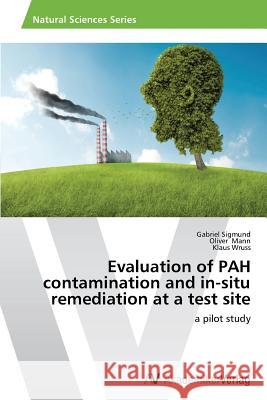Evaluation of PAH contamination and in-situ remediation at a test site » książka
Evaluation of PAH contamination and in-situ remediation at a test site
ISBN-13: 9783639629798 / Angielski / Miękka / 2014 / 80 str.
Groundwater polyaromatic hydrocarbon (PAH) concentrations underneath a contaminated site were measured with gas chromatography-mass spectrometry (GC-MS). As a form of soil flushing is planned as an in situ treatment for some sectors at the site, a cube of approximately 10 m was used to test the treatment. To gain a deeper understanding of the contamination situation of the test cube, a three dimensional visualisation of the pollutants distribution in the cube was created. Total PAH measurements were compared with eluate PAH measurements in two different visualisations, showing that the contamination situation is heterogeneous and complex, as the site contains PAH and hetero-PAH contaminations which vary largely in their composition. The contaminated groundwater of the in situ test plant was measured for PAHs and hetero-PAHs with GC-MS. It was found that the hetero-PAH composition of the groundwater changed significantly (p
Groundwater polyaromatic hydrocarbon (PAH) concentrations underneath a contaminated site were measured with gas chromatography-mass spectrometry (GC-MS). As a form of soil flushing is planned as an in situ treatment for some sectors at the site, a cube of approximately 10 m³ was used to test the treatment. To gain a deeper understanding of the contamination situation of the test cube, a three dimensional visualisation of the pollutants distribution in the cube was created. Total PAH measurements were compared with eluate PAH measurements in two different visualisations, showing that the contamination situation is heterogeneous and complex, as the site contains PAH and hetero-PAH contaminations which vary largely in their composition. The contaminated groundwater of the in situ test plant was measured for PAHs and hetero-PAHs with GC-MS. It was found that the hetero-PAH composition of the groundwater changed significantly (p <0.01) over time, enforcing the observation that tar contaminations with different composition were present in the test cube. The analysis was added by two biotest systems: the luminescent bacteria Vibrio fischeri and the algae Chlorella vulgaris.











